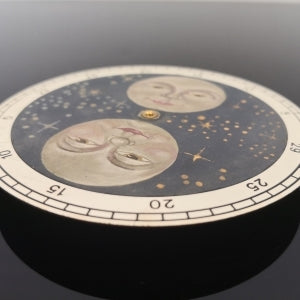Planning everyday life according to the lunar calendar is normal for some people. They plan their lives according to the current orientation of the moon and follow different approaches to this way of life. For some this sounds like cosmic hocus-pocus, for others it is a clever way of life.
The moon influences many things on our earth that we are probably not aware of. Just one example would be the tides, the difference in height of the oceans of up to 20 metres, between high and low tide. Due to the magnetic attraction of the moon on the water of the earth, in combination with the centrifugal force, a so-called “flood mountain” is created on both, the side of the earth facing the moon and the side away from the moon. Figuratively speaking, the earth rotates under the two ebb valleys in between within a day. Thus the gravitational pull of the moon and the centrifugal force in the earth-moon system interact and cause this effect. The complete system also rotates around a common centre of gravity inside the earth.
The moon also changes its light shape, these are known to us as the different phases of the moon. These phases are caused by the change in perspective of the moon during its orbit relative to the earth. The moon always turns the same side towards the earth, so it rotates once around its own axis during one orbit around the earth. The duration of such an orbit is 29 days, 12 hours, 44 minutes and 2.8 seconds. This phase is also called “lunation”. The different phases of the moon (four different ones, each of which lasts a week in rounded form) consist of a new moon, waxing moon, full moon and waning moon. There are also special events such as the lunar and solar eclipses, which are a much-acclaimed natural spectacle. Besides the low lunar gravity, which makes objects on the moon 6 times lighter than on earth, it is also interesting to note that the temperature on the moon can vary between plus 130 and minus 160 degrees.

